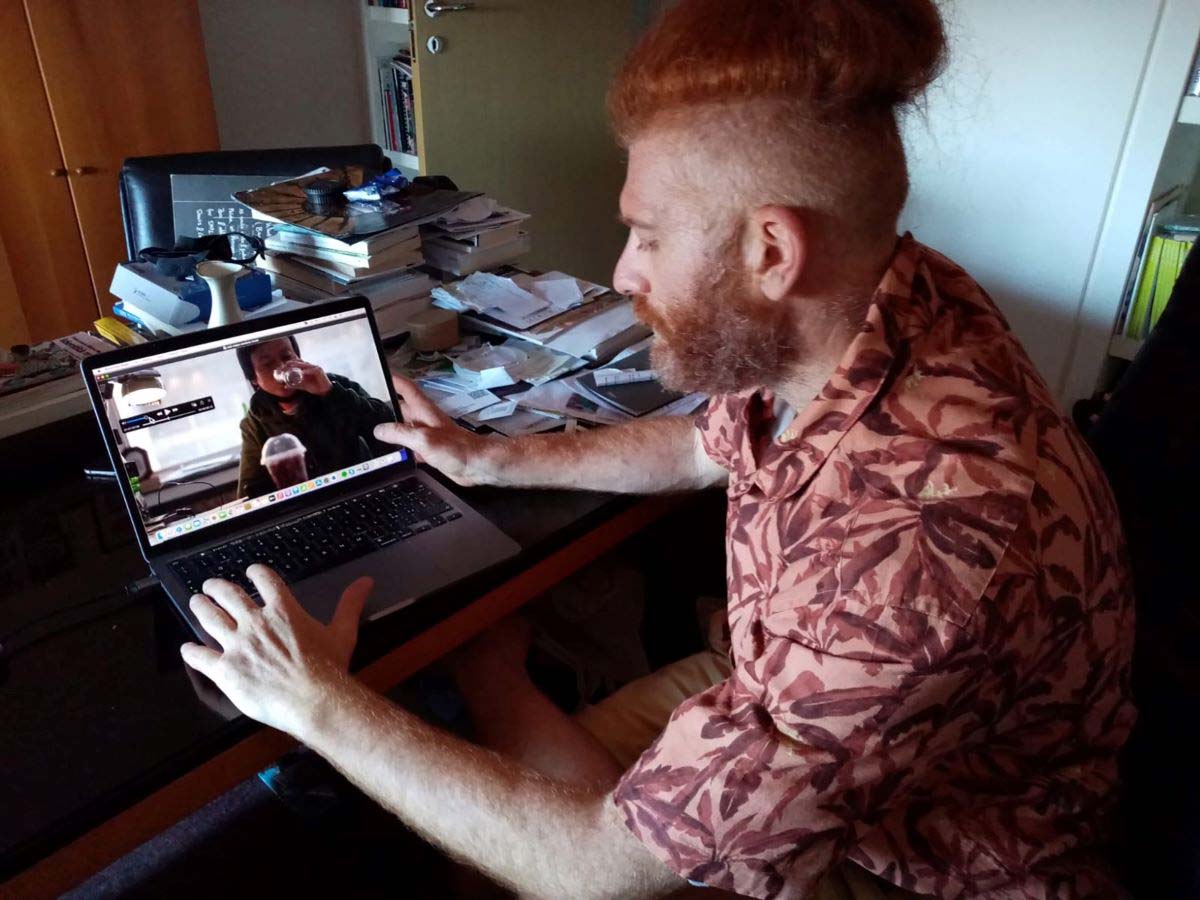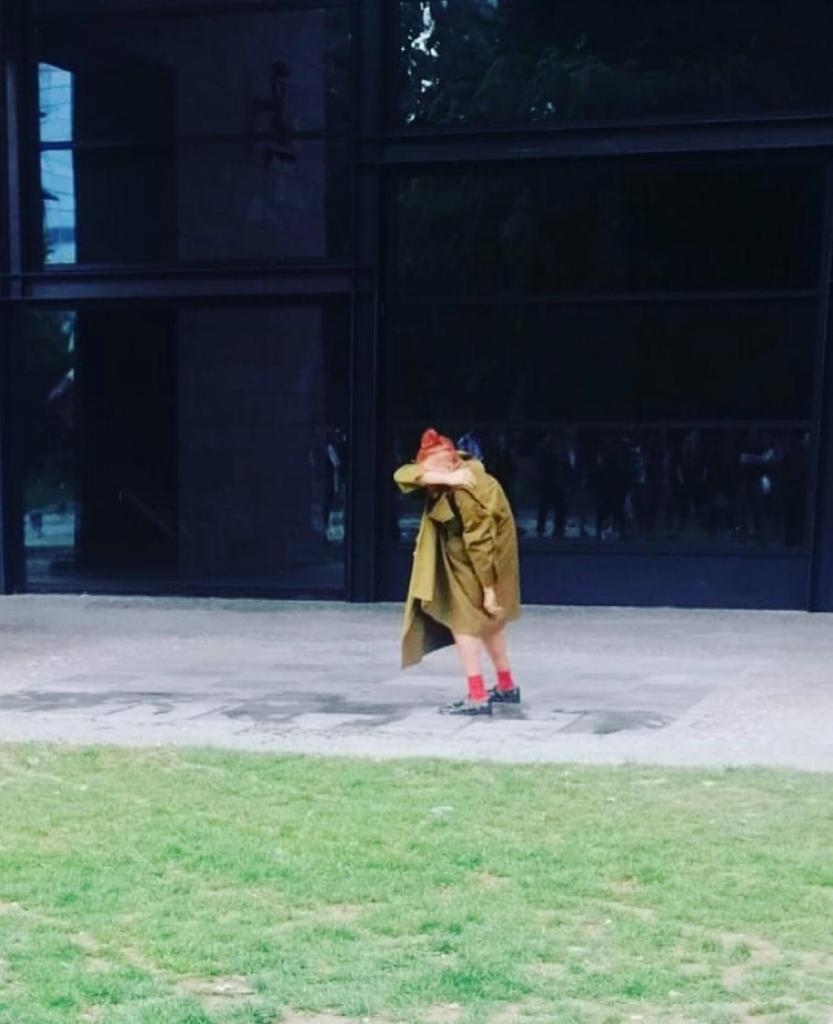Sergio Racanati (Bisceglie, 1982) is an artist from Puglia who has made performance and film practices his privileged means of expression. He has already received several international awards, including his most recent participation in the public program of the international contemporary art exhibition documenta15 in Kassel with the film essay WOK/WAJAN. His projects involve themes pertaining to the public sphere, investigating the political behavior of the community especially in its relationship between individual and collective memory.

FDV. What does it mean for Sergio Racanati to devote himself to artistic film practices? What is video art for you today and what do you want to propose with your work?
SR. My filmic practices have an experimental approach, in which the linear narrative is challenged in favor of a succession of micro-stories that leave the viewer in total freedom to travel in a suspended space/time. Today I would say my art video making is meant to be a political act. This way of understanding and making art cinema, in my opinion, is able to deal with the complexity of thought giving me full imaginative freedom. I like to cite in this regard the great thought of Hans Richter who identified some of the characteristics that continue to be ascribed to essay film even by contemporary theorists: transgression and crossing of genre boundaries; creative freedom in breaking away from the conventions of languages; complexity and reflexivity. This way of filmmaking allows me to be free: the essay film can collect and coexist and cohabit heteroclite material taken from anywhere, and its time and space are conditioned solely by the need to -attempt- to show and explain the“ complexity of thought.” With my artistic practice, aimed at the dis-articulation of social ties, I try to probe, like an ethnographer, the restless swarm of the multitude. I call my cinema visceral: the de-construction of the image breaks down, de-composes and re-composes in a kind of constant search for the precarious balance of non-linear forms of narrative that repeatedly unravel and collapse. I want to make the audience perform a trance!
The international contemporary art exhibition dOCUMNENTA15 recently concluded in Kassel, not without controversy. Sergio, you are the only Italian artist to have participated in the public program of the ruruHaus, the vital and constitutive center of the entire curatorial process of dOCUMENTA XV, with the film WOK/WAJAN. This film-essay of hers recounts in an intimate and participatory way the project carried out by the ruangrupa collective. dOCUMENTA15 showed a way of conceiving art that is foreign to the West because it is based on the solidarity-based maintenance of the art ecosystem, according to the guides of a true sharing economy. Do you think it is possible today to make art with a sustainable management of resources (of all resources) and with their solidarity sharing?
The WOK/WAJAN film focuses on the collection of peripheral elements of the city, highlighting the contrasts, nuances and gray areas that mark a notable difference in the perception of Kassel’s cultural and social life during the event compared to its normality in the times when it is outside the contemporary art circuits. It is an investigation that starts from the ruruHaus ecosystem and expands, relating the ecosystem itself to that of the city of Kassel. WOK/WAJAN is a film-essay, the dimension of which is often conceived already as a marginal phenomenon/attitude/research. What has emerged and is emerging-in my opinion-are reflections on the new necessities of art making, the role of the artist, mute rescue networks, co-production networks, solidarity economies projects, new eco-sustainable trajectories for both cultural and social and economic policies.
At the conclusion of what for you has turned out to be an experience in some ways certainly challenging, for others an ongoing project in the making since you have been to Kassel several times over the utmost years for the realization of WOK/WAJAN, what have you brought with you from this adventure of international scope?
I take with me wonderful discoveries, relationships, meetings, exchanges of perspectives. The smiles and the great welcome and attention of the curators. The great desire to continue doing research, to challenge those models that do not generate new imaginaries of sustainability, to create and consolidate networks of exchange and solidarity Making this film was like writing an essay. I had a lot of fun and at the same time I will never be able to forget the hours spent on the flix bus to reach Kassel from southern Italy.


After dOCUMENTA15, Sergio, stayed still Oltralpe, in Switzerland to be precise, to take part in the exhibition BANG BANG translocal hi:stories of performance art at Museum Tinguely in Basel (June 8-August 21, 2022). Would you like to tell us about it?
I participated in the call of BANG BANG translocal hi:stories of performing art with the performance DARKNESS because, thanks to the Young Talent Internationalization Award of the Puglia region, curated by Teatro Pubblico Pugliese and Regione Puglia, I had staged and performed the performance in 2019 in Locarno at laRada directed at that time by Riccardo Lisi. The call addressed to performances realized in Switzerland was aimed at researching and selecting documentation material for building the archive on the history of performance in Switzerland. Subsequently, I was invited to the exhibition BANG BANG translocal hi:histories of performing art. The exhibition project curated by Revolving Histories/Performance Chronik Basel and Museum Tinguely presents a kaleidoscopic display of video installations, performances, photos and texts. Tracing the development of performance art , it redraws the contours of ever-evolving performance. The performance DARKNESS stages a process of construction and de-construction of the collective and shared imaginary of contemporary apocalypses. The audience participates in a true shamanic and contemplative ritual of the unraveling of our time/space.
Sergio, what is the focus of your current artistic research and what are your future prospects, which are certainly promising?
I am the winner of the Italian Council grant (11th edition, 2022) Scope 3 - Talent Development Section-VII- Grant (grant) for research residency for artists, curators and critics at an accredited foreign venue. My residency will take place in Brazil in the Amazon rainforest in the Pará region. Here, together with Cassia Andrade, a São Paulo-based curator and cultural mediator, I will activate a series of activities, research, and convivial moments. The research will cross macro themes of global urgency such as forms of extractivism, colonialism and exploitation of bodies. I confess: I can’t wait to be at Campo de Heliantos in residence! I want to get lost in the sounds of tropical feathers and find myself hugging one of the last centuries-old palm trees that has survived the slaughter that humans are carrying out, second by second, after passing through ghostly industrial buildings.
Warning: the translation into English of the original Italian article was created using automatic tools. We undertake to review all articles, but we do not guarantee the total absence of inaccuracies in the translation due to the program. You can find the original by clicking on the ITA button. If you find any mistake,please contact us.